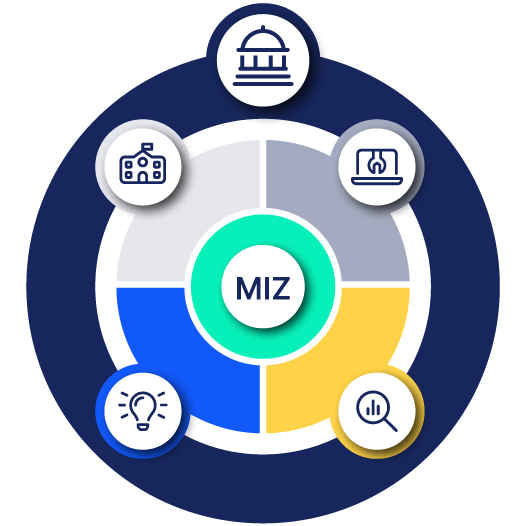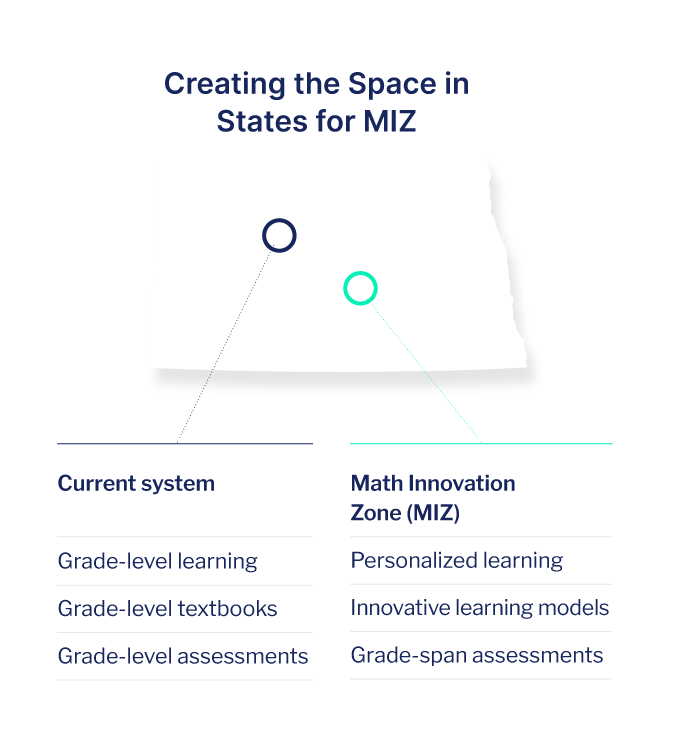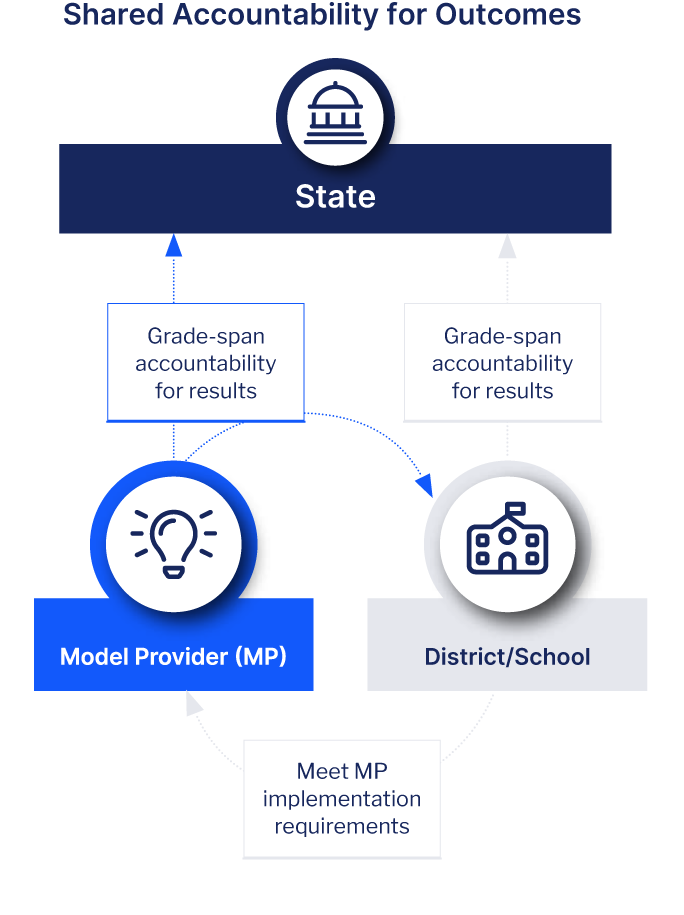Math Innovation Zones
A way for states to catalyze innovation and solve unfinished learning

Background
Math Innovation Zones (“MIZs”) provide a framework for state policymakers to support schools. This personalized approach to math ensures all students reach college and career readiness, but not through a uniform, grade-level structure. This allows states to research and understand the statewide implications of this approach while also introducing new mechanisms for personalization and shared accountability into its broader statewide strategy.
MIZs can also help states to overcome The Iceberg Problem, as outlined in a report that describes how a policy landscape oriented around grade-level standards in math can lead to a dramatic accumulation of unfinished learning below the surface of what’s being measured. The report builds its case from three arguments:
1
Math is cumulative
Unfinished learning from prior years makes it harder for students to master more advanced concepts.
2
State and federal policy incentivize an exclusive focus on grade-level instruction
Current education policies signal to educators to focus their instruction on annual grade-level standards regardless of individual student needs in math.
3
This approach is hindering college and career readiness
A focus on grade-level instruction keeps students from addressing the unfinished learning from prior school years that is required to master more advanced concepts.
By the conclusion of eighth grade, unfinished learning in math becomes an overwhelming obstacle.


Math Innovation
Zones in practice
Math Innovation Zones afford flexibility. Districts and schools in MIZs are incentivized to focus on comprehensive learning growth across the middle school grade span—not just a summative assessment of grade-level performance. Technical assistance providers work with schools to create the environment and infrastructure for personalized learning, and model providers work with schools to support every student and staff member in using a personalized learning model.
The state is responsible for oversight, facilitating connections between schools and providers, and building a complementary accountability system that requires all parties to demonstrate sustained, positive results. The state will also provide seed funding which can come from a variety of sources, including repurposed or braided federal grant funding allowable under ESSA, discretionary SEA dollars, legislative action, or public-private partnerships.
Requirements to enable MIZs
By investing in students over multiple years, a Math Innovation Zone will unlock the full potential of all students.
State
- Leverages funding
- Selects/evaluates providers
- Sources and selects voluntary districts
- Creates grade-span accountability
District/school
- Prioritizes comprehensive learning growth
- Selects providers and facilitates implementation
Model provider
- Employs personalized learning model
- Administers formative and interim assessments
- Produces grade-span accountability results

Technical assistance provider
- Establishes requisite infrastructure
- Leads professional learning

Independent research organization
- Validates results